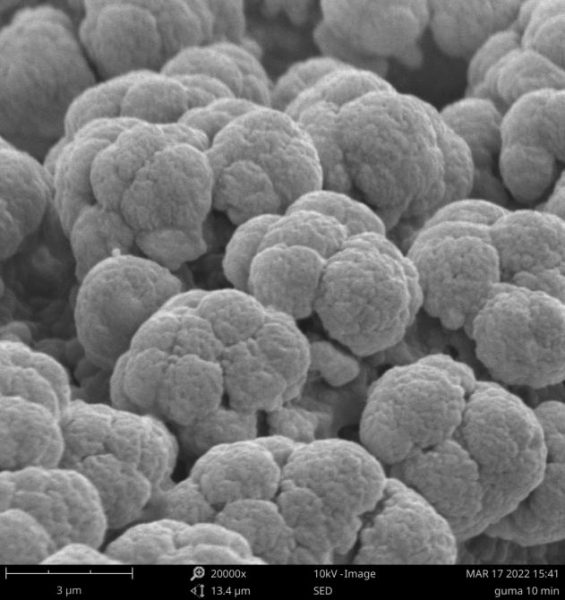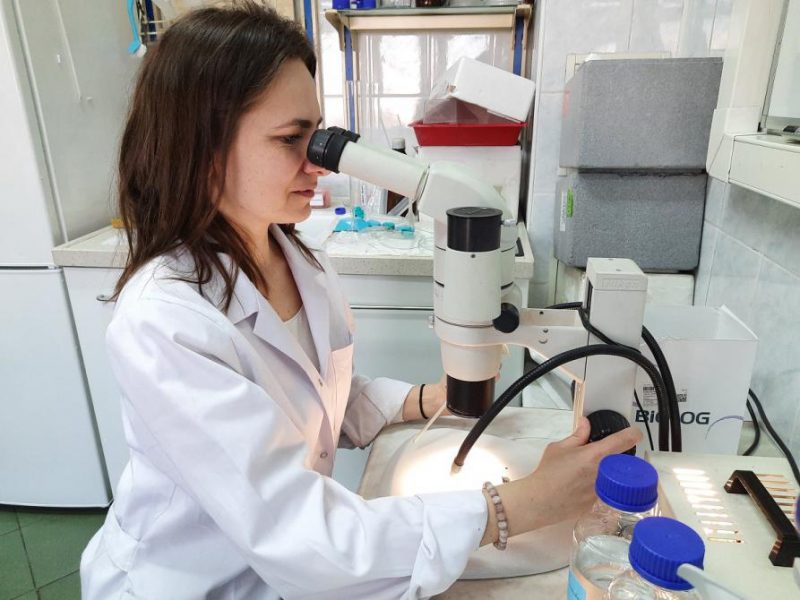| Małgorzata Kłoskowicz |
The whole world gladly uses motorways. They make travelling much easier, they reduce fuel consumption, they are safer. But how this kind of infrastructure affects the life quality of animals? – It is a world turned upside down, one they have to learn once again – says Agnieszka Babczyńska, PhD, Assoc. Prof., a laureate of the contest “The Green Horizon,” organised as part of the programme Research Excellence Initiative. The biologist together with an international team is studying the effects of tire dust on herbivorous invertebrates.
Life near the motorway
For many animals the motorway is a practically never-ending, impassable stretch that divides two areas. Admittedly, there are special passages, but they are built mainly in places that were previously crossed by the migration routes of wild animals.
– The hardest period seems to be the one of the construction of the expressway – from the animal perspective, the world literally turns upside down in one moment. We have no doubts, however, that nature will cope and animals will get used to the new situation – says Prof. Agnieszka Babczyńska.
Although for many species the motorway actually becomes an impassable route, with time the environment stabilises and animal species which intelligently use new opportunities emerge. For example, some species of predatory birds like to sit near motorways, patiently waiting for the animal victims of road traffic
At this point, however, other nuisances that come with such infrastructure are worth mentioning. These certainly involve noise and surface vibrations, as well as all kinds of pollution.
– The latter of the abovementioned elements is of particular interest to us. It is a very interesting topic, as we are talking not only about the effect of car traffic on gaseous air pollution, but also about dust that enters the environment through the use of vehicles. It can be dust that emerges as a result of the abrasion of various plastic, metal, or rubber parts of cars – the researcher enumerates. – In our international research team, we have decided to examine the effects of the exposure of the chosen invertebrates living near motorways to tire dust – she adds. The project was highly rated in Research Excellence Initiative competition of the University of Silesia called “The Green Horizon” and received funding from this source.

Rubber Trojan horse
The topic is both interesting and hard to study at once. In the case of dust that appears in the vicinity of motorways, we are talking about a highly diversified mixture of various chemical compounds. It emerges as an effect of the abrasion of various car elements, such as brake pads or discs, tires, chains, belts, springs, or shock absorbers.
The extent of the spread of this dust also varies. Different type of pollution will be observed on the plants growing right next to the road, different on the leaves of the trees standing at a distance. What is more, a lot depends on the landscape around the motorway – whether it includes flatland, grassland, meadows, or mountainous, wooded terrain. The situation looks different in summer and in winter. The extent of the settling of dust is also affected by the weather. The conclusion is simple: the further from the motorway, the greater the differences, both quantitative and qualitative.
Although the researchers will want to consider as many variables as possible, the project will begin with examining the effect of tire dust on the lives of the chosen herbivorous invertebrates. As the biologist explains, just this one topic seems to be a bottomless well.
– From our perspective, the chemical composition of the material from which the tires are made is very important. We know that it is made of polymers with various admixtures. Their microparticles first hover in the air and then settle, covering plants and everything around. Due to their physiochemical properties and porosity they are real Trojan horses, which transport “stowaways,” i.e. other organic and inorganic compounds that further complicate the toxicity of motorway dust – says Prof. Agnieszka Babczyńska.
It should also be remembered that there are many manufacturers whose products differ in chemical composition. Moreover, the chemical composition of the materials from which summer tires, winter tires and all-season tires are made is also different. The quantitative and qualitative differences also depend on the date of production and the degree of the tire’s wear.
The work of scientists will resemble a detective analysis, as producers will not necessarily reveal what admixtures are used in their materials. Before the research on the motorway begins, two locations were chosen as a starting point, which well characterise the traffic on the expressway. One of them is a busy intersection near the M1 shopping centre in Czeladź, surrounded by large non-forested areas. The other place is the wooded area near the Czułów turnoff on the route from Katowice to Tychy.
From Poland to Lithuania, Italy and France
– The goals we set for our team obviously had an impact on the search for project partners. We have created a great international team representing six research units from Poland, Lithuania, Italy, and France – says the researcher.
A team from the University of Silesia is conducting toxicological research. It has several model species in the collection that are very well understood. One of them, which was chosen for research within the presented project, is mealworm beetle. Partners from the Vytautas Magnus University in Kaunas, proposed two additional model species, i.e. earthworm and daphnia. – We have already sent them a package weighing over 40 kilograms with material for further research – says the biologist.
Animals prepared for analysis will be sent from Lithuania to Italy, where a team from the University of Trieste and the University of Calabria will identify particles from tyre dust that have accumulated in organisms such as the digestive system. In addition, the dust will be collected in Poland for shipment to partners at the University of Grenoble Alpes. There, a team of geochemists will characterise the material received, which is primarily extracted from leaves found along the explored roads. Moreover, the team from the University of Silesia prepares reference material by grinding fragments of different tyres in the laboratory to ensure that the other partners check the impact of this type of pollution they are interested in for the project.
– Additionally, we wanted to involve students. I hope that the cooperation will result in two MA theses – says Prof. Agnieszka Babczyńska.
She also says that establishing the cooperation itself wasn’t difficult. Two partners – from Lithuania and the University of Trieste – already cooperate with the University of Silesia within the Transform4Europe alliance, which made it easier to establish contact. The others, after getting acquainted with the topic, reacted with enthusiasm and are interested in continuing the cooperation of further projects extending the topic of the research being conducted.
Prof. Agnieszka Babczyńska stresses that this is only the beginning of the research, so it will be difficult to answer all questions related to the impact of dust in terms of ranges and effects.
– We already know that it’s worth continuing and therefore extending it. I’m convinced that in this way, we will be able to suggest certain solutions for the road infrastructure, so that the motorways under construction wouldn’t have such a negative impact on the ecosystem in the vicinity. I assume that we will be able to identify, for instance, certain plant species that are effective in reducing the spread of dust. This is one way of taking care of biological diversity – concludes the biologist.
The project team working under the supervision of Prof. Agnieszka Babczyńska includes: Monika Tarnawska, PhD, Jolanta Brożek, PhD, DSc, Associate Professor, Prof. Maria Augustyniak, Bartosz Łozowski, PhD, Marta Sawadro, PhD, and Agnieszka Czerwonka, MSc, from the Institute of Biology, Biotechnology and Environmental Protection of the University of Silesia in Katowice, as well as: Magdalena Kowalewska-Groszkowska from the Museum and Institute of Zoology of the Polish Academy of Sciences in Warsaw, Jūratė Žaltauskaitė , PhD and Gintarė Sujetovienė, PhD, from the Vytautas Magnus University in Kaunas, Prof. Monia Renzi and Prof. Piero G. Giulianini from the University of Trieste, Anita Giglio, PhD, from the University of Calabria and Jean-Luc Jaffrezo, PhD, and Gaëlle Uzu, PhD, from the University of Grenoble Alpes.
The article “The motorway from the perspective of a mealworm, an earthworm and a daphnia” was published in the April edition of Gazeta Uniwersytecka UŚ (University of Silesia Magazine).

Agnieszka Babczyńska, PhD, Assoc. Prof. | photo Agnieszka Sikora





